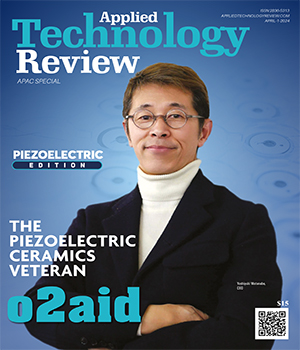The global piezoelectric market is projected to grow significantly in 2024, driven by increasing demand across major end-use industries such as automotive, healthcare, consumer electronics, and aerospace. The rising adoption of piezoelectric sensors and actuators in automation, energy harvesting, and precision positioning applications will be the primary growth factor.
One of the increasing focuses is on sustainability, which is propelling the development of piezo-based energy harvesting solutions. These solutions offer cleaner power alternatives, particularly for IoT devices, wearables, and other electronics. The piezoelectric effect, where mechanical vibrations or applied stress generate electric charge, is central to these innovations.
The piezoelectric materials market is also benefiting from technological advances in piezoelectric motors and actuators. These advancements are enabling higher precision in motion control, critical for applications in robotics, manufacturing, and micro-positioning systems. The adaptability of piezoceramic materials, such as the modification of performance through doping in lead zirconate titanate (PZT), enhances their application in these areas. For instance, doping with niobium or iron alters the piezoelectric response, making these materials more suitable for specific applications in electronics and automotive industries.
Driven by these trends, the piezoelectric devices market size is predicted to reach $31.06 billion by 2028 at a compound annual growth rate (CAGR) of 3.5 percent.
This edition of Applied Technology Review examines the latest developments and future outlook for the piezoelectric materials market across the APAC region.
It features a thought leadership article from Mei Cai, Director of Battery Cell Systems Research at General Motors, who sheds light on leveraging nanomaterial expertise and computational modeling to develop and manufacture advanced battery cells that power the company’s electric vehicle lineup. It also features an article from Danny Williams, Head of Information Technology at Nutrifood, who emphasizes starting with clear goals, choosing technologies that directly improve manufacturing and distribution processes, leveraging data and analytics for continuous improvement, and moving to the cloud for greater efficiency and connectivity.
In this edition of Applied Technology Review, we also bring you the story of top piezoelectric solutions providers delivering innovative materials and components that enable breakthrough applications across automotive, consumer electronics, robotics, and other key industries. One of them is o2aid, which provides specialized piezoelectric ceramic solutions, materials expertise, and acoustic engineering services to help companies develop innovative products and advance piezoelectric technology across diverse applications.
Another leader is Microfine Materials Technologies, a National University of Singapore spin-off known for its expertise in specialized piezoelectric crystals. Leveraging the materials’ properties, Microfine advances piezoelectric technology through innovative devices for imaging, sonar, biometrics, and defense applications.
In this edition featuring the Top Piezoelectric Solutions Providers in APAC 2024, we hope you find the right partner to meet your organizations’ needs.


















